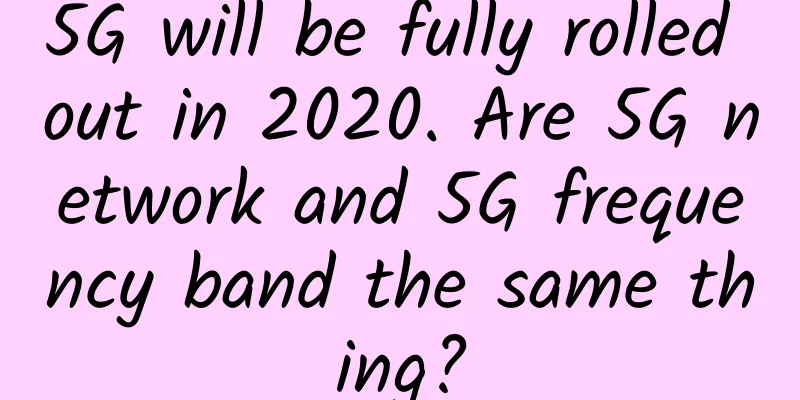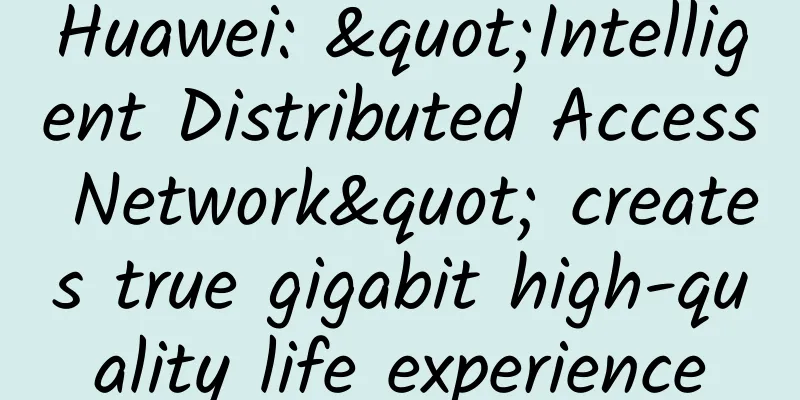5G will be fully rolled out in 2020. Are 5G network and 5G frequency band the same thing?

|
After the 5G trial commercialization in 2018 and the official release of the 5G operating license in 2019, 5G will be fully rolled out in 2020. 5G stands for the fifth generation of mobile communication technology, and 5G network and 5G frequency band are completely different things in the concept of 5G. It can be said that 5G frequency band is the basic resource of 5G communication, and 5G network is the application basis of 5G communication. 5G frequency band 5G is a wireless communication technology, and all wireless communication technologies are inseparable from electromagnetic waves, which involves the division of the electromagnetic wave spectrum range for various wireless communication applications. The 5G frequency band refers to the corresponding electromagnetic wave spectrum range. Without the frequency band, wireless communication is out of the question. The following is the 5G frequency band division of my country's three major telecommunications companies:
5G Network 5G network is also called 5G mobile network. Like the earlier 2G, 3G and 4G mobile networks, 5G network is also a digital cellular network. Only when communication base stations are used as base points to form a network, various mobile terminals, such as mobile phones, can receive radio signals in the 5G frequency band when moving in this network. In this type of network, the service area covered by the provider is divided into many small geographical areas called cells. The analog signals representing sound and images are digitized in the mobile phone, converted by an analog-to-digital converter and transmitted as a bit stream. All 5G wireless devices in a cell communicate via radio waves with local antenna arrays and low-power automated transceivers (transmitters and receivers) in the cell. The transceivers allocate channels from a common frequency pool, which are reused in geographically separated cells. The local antennas connect to the telephone network and the internet via high-bandwidth fiber or wireless backhaul connections. As with existing cell phones, when users traverse from one cell to another, their mobile devices will automatically "switch" to the antenna in the new cell. 5G network has the following characteristics:
The above characteristics of 5G networks are also the key that distinguishes 5G from previous generations of mobile communications, and are also the result of the gradual shift of mobile communications from technology-centered to user-centered. |
>>: Super detailed! Introduction to Ethernet switch security features
Recommend
10 times faster than 5G, are you ready for 10G communications?
The 2022 Winter Olympics will allow everyone to e...
Justhost has launched its 22nd node in Türkiye, with 200Mbps unlimited VPS starting at $1.73 per month
Justhost.ru recently launched its 22nd VPS node: ...
Edge Data Centers and the Impact of 5G
A new category of data center will become a major...
Liu Liehong: my country has built the world's largest optical fiber network and 4G network
[[391129]] On March 31, the "2021 Digital Tr...
Seven chatbot building platforms: Easily build your own bot
【51CTO.com Quick Translation】 Chatterbot is a pro...
Cloud-based assembly line, one-click construction is no longer a dream!
In December, the Software Development Cloud launc...
What to do when you encounter a network failure? Teach you a trick to use route tracking to locate the fault point
In the Internet world, we interact with various n...
NWCU's Smart New Campus 2.0, layout of "IT unified smart operation and maintenance" (Part 2): operation and maintenance organization management and process management
Xi’an University of Architecture and Technology i...
[Double Holiday] DesiVPS: $15/year-1GB/15G NVMe/1.5TB@10Gbps/San Jose Data Center
DesiVPS released a Christmas promotion plan, whic...
The shortest path to microservice containerization, best practices for microservices on C
Preface Microservices, as a more flexible, reliab...
HostDare: 35% off VPS on CN2 GT line in Los Angeles, 10% off VPS on CN2 GIA line
HostDare has sorted out its VPS product inventory...
#Has run away#Limewave: $20/year-AMD Ryzen 5950X/1GB/10G SSD/1TB/Seattle
【Attention】This merchant has run away!!! Limewave...
Who invented Ethernet? Do you know?
On April 7, 1946, the year after the end of World...
Netty - Sticky Packets and Half Packets (Part 2)
Continue from the previous article "Introduc...
80VPS: US 8C cluster server monthly payment starts from 800 yuan, Hong Kong 8C cluster server monthly payment starts from 1000 yuan
Recently, some readers asked about cluster server...









